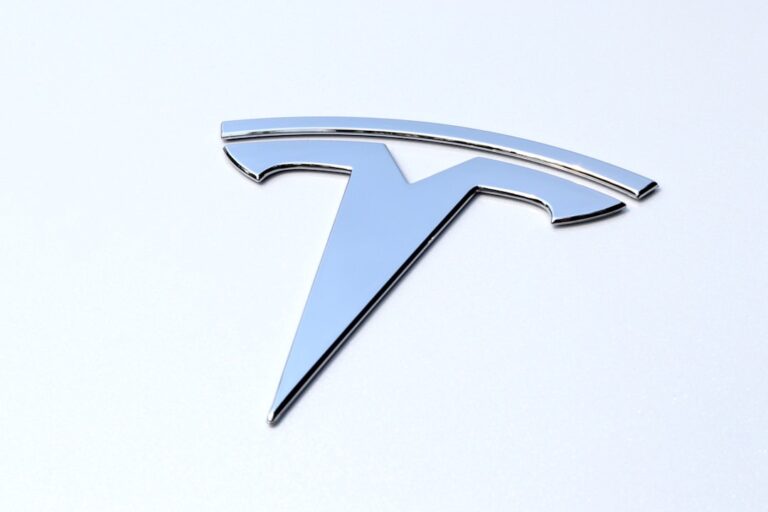
Tesla, Inc., a name synonymous with electric vehicles (EVs), has become a pivotal player in the automotive industry and a significant component of the Nasdaq stock exchange. Founded in 2003 by Martin Eberhard and Marc Tarpenning, the company gained prominence under the leadership of Elon Musk, who joined as chairman of the board and later became CEO. Tesla’s mission is to accelerate the world’s transition to sustainable energy, and it has achieved this through innovative technology, strategic marketing, and a commitment to producing high-performance electric vehicles.
The company’s stock, traded on the Nasdaq under the ticker symbol TSLA, has seen remarkable fluctuations, reflecting both the volatile nature of the tech market and the growing interest in sustainable transportation. Tesla’s journey on the Nasdaq has been nothing short of extraordinary. From its initial public offering (IPO) in 2010, where shares were priced at $17, to its meteoric rise to over $1,000 per share in recent years, Tesla’s stock performance has captivated investors and analysts alike.
The company’s ability to disrupt traditional automotive paradigms while simultaneously pushing the boundaries of technology has made it a focal point for discussions about the future of transportation and energy. As Tesla continues to innovate and expand its product lineup, its influence on both the stock market and the automotive landscape remains profound.
Key Takeaways
- Nasdaq Tesla has become a prominent player in the electric vehicle industry, revolutionizing the automotive market with its innovative technology and sustainable approach.
- The rise of electric vehicles has been fueled by growing environmental concerns, advancements in battery technology, and government incentives for clean energy transportation.
- Tesla’s impact on the automotive industry has forced traditional car manufacturers to invest in electric vehicle technology and shift towards sustainable practices.
- The future of electric vehicles looks promising, with advancements in battery technology, infrastructure development, and increasing consumer demand for eco-friendly transportation options.
- Nasdaq Tesla’s stock performance has been volatile, influenced by factors such as production challenges, competition, and market sentiment, presenting both opportunities and risks for investors.
The Rise of Electric Vehicles
The rise of electric vehicles can be traced back to a confluence of technological advancements, environmental concerns, and changing consumer preferences. In recent years, the global automotive market has witnessed a significant shift towards electrification, driven by innovations in battery technology that have improved range and reduced costs. The development of lithium-ion batteries has been particularly transformative, allowing electric vehicles to compete more effectively with their internal combustion engine counterparts.
As battery prices have plummeted—by nearly 90% since 2010—manufacturers have been able to produce EVs that are not only more affordable but also offer longer ranges, making them more appealing to consumers. Moreover, the growing awareness of climate change and the urgent need for sustainable solutions have propelled electric vehicles into the mainstream. Governments around the world are setting ambitious targets for reducing greenhouse gas emissions, with many countries pledging to phase out gasoline and diesel vehicles in favor of electric alternatives.
This shift is not merely a trend; it represents a fundamental change in how society views transportation. Consumers are increasingly prioritizing sustainability in their purchasing decisions, leading to a surge in demand for electric vehicles. Major automakers are responding by investing heavily in EV technology and infrastructure, further solidifying the position of electric vehicles in the automotive market.
Tesla’s Impact on the Automotive Industry

Tesla’s impact on the automotive industry extends far beyond its sales figures; it has fundamentally altered how manufacturers approach vehicle design, production, and marketing. By prioritizing software integration and user experience, Tesla has set new standards for what consumers expect from their vehicles. The company’s over-the-air software updates allow for continuous improvement of vehicle performance and features long after purchase, a concept that traditional automakers are now scrambling to replicate.
This focus on technology has not only enhanced customer satisfaction but has also created a new revenue stream through software services. Furthermore, Tesla’s direct-to-consumer sales model has disrupted traditional dealership networks. By selling vehicles online and through company-owned showrooms, Tesla has eliminated many of the costs associated with maintaining a dealership infrastructure.
This approach allows for greater transparency in pricing and a more streamlined purchasing experience for consumers. As other manufacturers observe Tesla’s success, many are beginning to explore similar sales strategies, indicating a potential shift in how vehicles are marketed and sold in the future.
The Future of Electric Vehicles
| Metrics | Data |
|---|---|
| Global Electric Vehicle Sales (2020) | 3.1 million |
| Projected Global Electric Vehicle Sales (2030) | 26 million |
| Electric Vehicle Market Share (2020) | 4.2% |
| Projected Electric Vehicle Market Share (2030) | 31% |
| Electric Vehicle Charging Stations (2020) | 1.2 million |
| Projected Electric Vehicle Charging Stations (2030) | 14 million |
The future of electric vehicles appears bright as advancements in technology continue to unfold at an unprecedented pace. Battery technology is at the forefront of this evolution, with research into solid-state batteries promising even greater energy density and safety compared to current lithium-ion solutions. Companies like QuantumScape are working on solid-state batteries that could revolutionize EV performance by significantly increasing range while reducing charging times.
As these technologies mature, they will likely lead to a new generation of electric vehicles that are more efficient and accessible to a broader audience. In addition to battery advancements, the expansion of charging infrastructure is critical for the widespread adoption of electric vehicles. Governments and private companies are investing heavily in building out charging networks to alleviate range anxiety among potential EV buyers.
Initiatives such as the U.S. government’s plan to install 500,000 charging stations by 2030 demonstrate a commitment to supporting electric vehicle adoption. Furthermore, innovations in fast-charging technology are making it possible for drivers to recharge their vehicles in a matter of minutes rather than hours.
As these developments continue to unfold, they will play a crucial role in shaping consumer perceptions and driving demand for electric vehicles.
Nasdaq Tesla’s Stock Performance
Tesla’s stock performance on Nasdaq has been characterized by volatility and dramatic price swings that reflect both investor sentiment and broader market trends. After its IPO in 2010, TSLA shares experienced gradual growth until 2013 when they began to gain significant traction following strong sales figures and positive media coverage. The company’s ability to consistently meet production targets and deliver innovative products has fueled investor enthusiasm, leading to rapid price increases.
For instance, in 2020 alone, Tesla’s stock surged by over 700%, driven by record vehicle deliveries and inclusion in the S&P 500 index. However, this meteoric rise has not been without challenges. Tesla’s stock has faced periods of sharp declines due to various factors such as production delays, regulatory scrutiny, and broader market corrections.
For example, in early 2021, TSLA shares fell sharply amid concerns over rising raw material costs and increased competition from traditional automakers entering the EV space. Despite these fluctuations, Tesla’s long-term growth trajectory remains strong as investors continue to bet on the company’s ability to dominate the electric vehicle market and expand into new areas such as energy storage and solar power.
Challenges and Opportunities for Electric Vehicle Companies

While the electric vehicle market presents numerous opportunities for growth, it is not without its challenges. One significant hurdle is the intense competition emerging from both established automakers and new entrants into the EV space. Traditional manufacturers like Ford, General Motors, and Volkswagen are investing billions into electrification efforts, launching their own electric models to capture market share.
This influx of competition could lead to price wars that may squeeze profit margins for all players involved. Additionally, supply chain issues pose a considerable challenge for electric vehicle manufacturers. The global semiconductor shortage that began in 2020 highlighted vulnerabilities within supply chains that are critical for EV production.
As manufacturers ramp up production to meet growing demand, securing access to essential components like batteries and chips will be crucial for maintaining momentum. Companies that can effectively navigate these supply chain challenges while ensuring quality control will be better positioned for success in an increasingly competitive landscape.
Government Policies and Electric Vehicle Adoption
Government policies play a pivotal role in shaping the landscape for electric vehicle adoption. Incentives such as tax credits, rebates, and grants have been instrumental in encouraging consumers to make the switch from gasoline-powered vehicles to electric alternatives. In the United States, federal tax credits of up to $7,500 have significantly lowered the effective cost of purchasing an electric vehicle, making them more accessible to a wider audience.
Additionally, many states offer their own incentives that can further enhance affordability. Beyond financial incentives, regulatory measures aimed at reducing emissions are also driving electric vehicle adoption. Many countries have set ambitious targets for phasing out internal combustion engine vehicles entirely within the next few decades.
For instance, Norway aims to sell only zero-emission cars by 2025, while several European nations have announced plans to ban gasoline and diesel cars by 2030 or 2035. These policies create a sense of urgency among consumers and manufacturers alike, accelerating the transition towards electric mobility.
The Road Ahead for Nasdaq Tesla
As Tesla continues its journey on Nasdaq amidst an evolving automotive landscape, its influence on both the stock market and electric vehicle adoption remains profound. The company’s innovative spirit and commitment to sustainability position it well for future growth as it navigates challenges posed by competition and supply chain dynamics. With advancements in battery technology and expanding charging infrastructure paving the way for broader acceptance of electric vehicles, Tesla stands at the forefront of this transformative era.
The road ahead is filled with opportunities as well as obstacles; however, Tesla’s track record suggests that it is well-equipped to adapt and thrive in this dynamic environment. As consumer preferences shift towards sustainable transportation solutions and governments implement supportive policies, Tesla’s role as a leader in the electric vehicle market will likely continue to grow. Investors will be watching closely as Tesla charts its course through this exciting yet unpredictable landscape.
In a recent article on TSLA Investors, it was reported that Tesla sales have plummeted by 45% in Europe, leading to a significant drop in Elon Musk’s net worth by $5.2 billion in just one week. This unprecedented slide in Tesla’s sales and Musk’s wealth has raised concerns among investors and analysts. To read more about this concerning trend, check out the article here.
Check out the latest Tesla products that you purchase right now!
